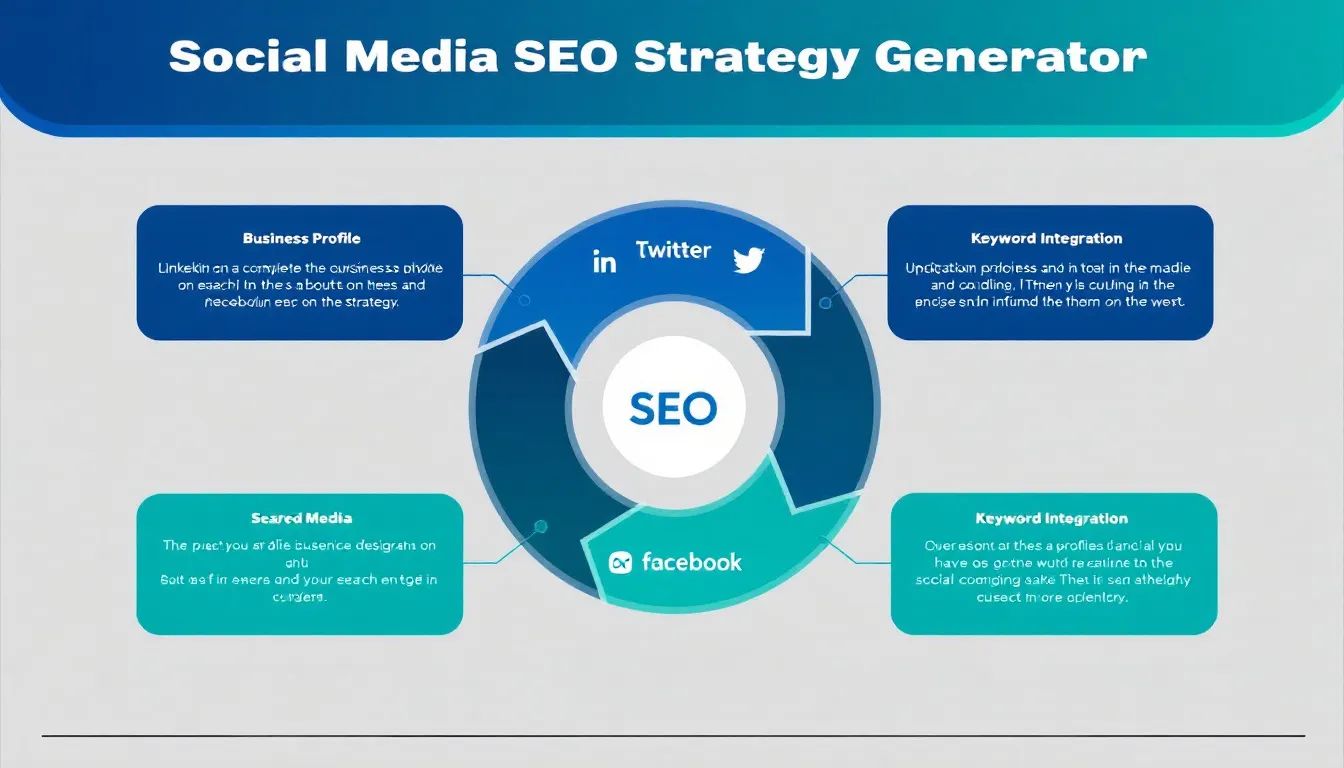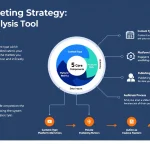Social Media SEO Strategy Generator
Generating your strategy...
Is this tool helpful?
How to Use the Social Media SEO Strategy Generator Effectively
1. Enter Your Business Name
Type your full business name exactly as you want it to appear on your social media profiles. Use clear, recognizable names to maximize SEO impact. For example:
- Sample Input 1: “BrightPath Consulting Group”
- Sample Input 2: “EcoTech Innovations”
2. Specify Your Industry or Niche
Clearly define your business sector for tailored recommendations. Be as specific as possible to get relevant strategies. For example:
- Sample Input 1: “Sustainable Energy Solutions”
- Sample Input 2: “Online Education Platforms”
3. Provide Your Target Keywords
List keywords related to your business, separated by commas. To improve SEO and reach, consider including:
- 4-6 primary keywords that best describe your core services
- 2-4 long-tail keywords for niche targeting
- 1-3 location-specific keywords, if applicable
4. Describe Your Target Audience
Provide details about your ideal customers to help the tool tailor strategies. Include:
- Age groups
- Job roles or industries
- Interests, challenges, or motivations
- How they typically interact with social media
5. Select Your Primary Social Platform
Choose the social media platform where you want to focus your efforts first, such as LinkedIn, Instagram, Twitter, or Facebook. This focuses the strategy on platform-specific best practices.
What Is the Social Media SEO Strategy Generator?
The Social Media SEO Strategy Generator is a tool designed to combine your social media marketing with targeted SEO techniques. It helps you develop a content and engagement plan that aligns your social media presence with search engine optimization goals.
By analyzing your business details, target keywords, audience, and preferred platforms, the tool generates a customized strategy. This strategy optimizes your content to improve visibility, foster audience interaction, and increase your reach on social channels.
Key Features Include:
- Keyword-rich content recommendations tailored for your social platform
- Methods to blend SEO keywords naturally into posts and profiles
- Suggestions for audience engagement and interaction
- Approaches to maintain brand consistency across multiple channels
Practical Usage of the Tool
This tool helps you craft focused social media strategies that improve organic reach and boost engagement. For example:
Local Business Example
- Business: “GreenLeaf Garden Supplies”
- Industry: “Organic Gardening and Landscaping”
- Keywords: “organic garden tools, eco-friendly fertilizers, sustainable landscaping”
- Outcome: Strategy boosted local engagement by 35% through targeted keyword use in Facebook content.
E-commerce Brand Example
- Business: “UrbanStyle Apparel”
- Industry: “Online Fashion Retail”
- Keywords: “affordable streetwear, urban fashion trends, sustainable clothing”
- Outcome: Strategy increased Instagram-driven online sales by 50% through optimized hashtag use and content tactics.
Use the strategy generated by this tool to:
- Align your social media posts with SEO-friendly keywords
- Create content formats that resonate with your audience on each platform
- Improve brand consistency to build stronger recognition
- Make data-driven decisions on content timing and engagement methods
Why Use the Social Media SEO Strategy Generator?
Improve Your Online Visibility
You increase your chances of being discovered organically by aligning social media content with SEO goals. This drives consistent brand messaging and boosts your presence in search engine results and social feeds.
Save Time and Effort
The tool automates strategy creation, giving you clear, actionable steps. It removes guesswork and helps you focus your resources on content that delivers the best results.
Make Data-Driven Decisions
With targeted recommendations, you tailor your approach to your industry and audience. The tool helps you measure success by focusing on relevant metrics tied to engagement, keyword ranking, and traffic.
Overcome Social Media SEO Challenges
Challenge: Natural Keyword Integration
The tool suggests ways to weave your keywords naturally into your posts and profiles so your content reads smoothly without keyword stuffing.
Challenge: Consistent Branding Across Platforms
It guides you in adapting your messaging to fit different platform styles while keeping your brand voice recognizable and cohesive.
Frequently Asked Questions
Q: How many keywords should I include?
Include 5-7 main keywords plus 3-5 long-tail keywords that closely relate to your products or services. This balance enhances your reach without diluting your focus.
Q: Which social platforms suit B2B businesses best?
LinkedIn and Twitter offer strong engagement opportunities for B2B companies. Instagram also helps with branding and showcasing company culture.
Q: How often should I update my social media SEO strategy?
Review and adjust your strategy every quarter. This keeps it aligned with platform algorithm changes and shifts in your business goals.
Q: Can I reuse the same content across platforms?
Keep your core message consistent but tailor the format, tone, and style to each social media channel’s unique audience.
Q: How do I measure the success of my strategy?
Track engagement rates, website traffic from social media, click-through rates, and keyword ranking improvements on your profiles.
Q: Should I focus on all platforms at once?
Focus on 2-3 platforms where your audience is most active. Expand once you see results and have resources to manage multiple channels effectively.
Q: How do I optimize my social media profiles for SEO?
Add relevant keywords in your bios and descriptions, maintain consistent branding, and regularly post optimized content with links directing users to your website.
Q: What content types work best for social media SEO?
Mix educational posts, visuals, user-generated content, and industry news. This variety increases engagement and supports your SEO goals effectively.
Important Disclaimer
The calculations, results, and content provided by our tools are not guaranteed to be accurate, complete, or reliable. Users are responsible for verifying and interpreting the results. Our content and tools may contain errors, biases, or inconsistencies. Do not enter personal data, sensitive information, or personally identifiable information in our web forms or tools. Such data entry violates our terms of service and may result in unauthorized disclosure to third parties. We reserve the right to save inputs and outputs from our tools for the purposes of error debugging, bias identification, and performance improvement. External companies providing AI models used in our tools may also save and process data in accordance with their own policies. By using our tools, you consent to this data collection and processing. We reserve the right to limit the usage of our tools based on current usability factors.







